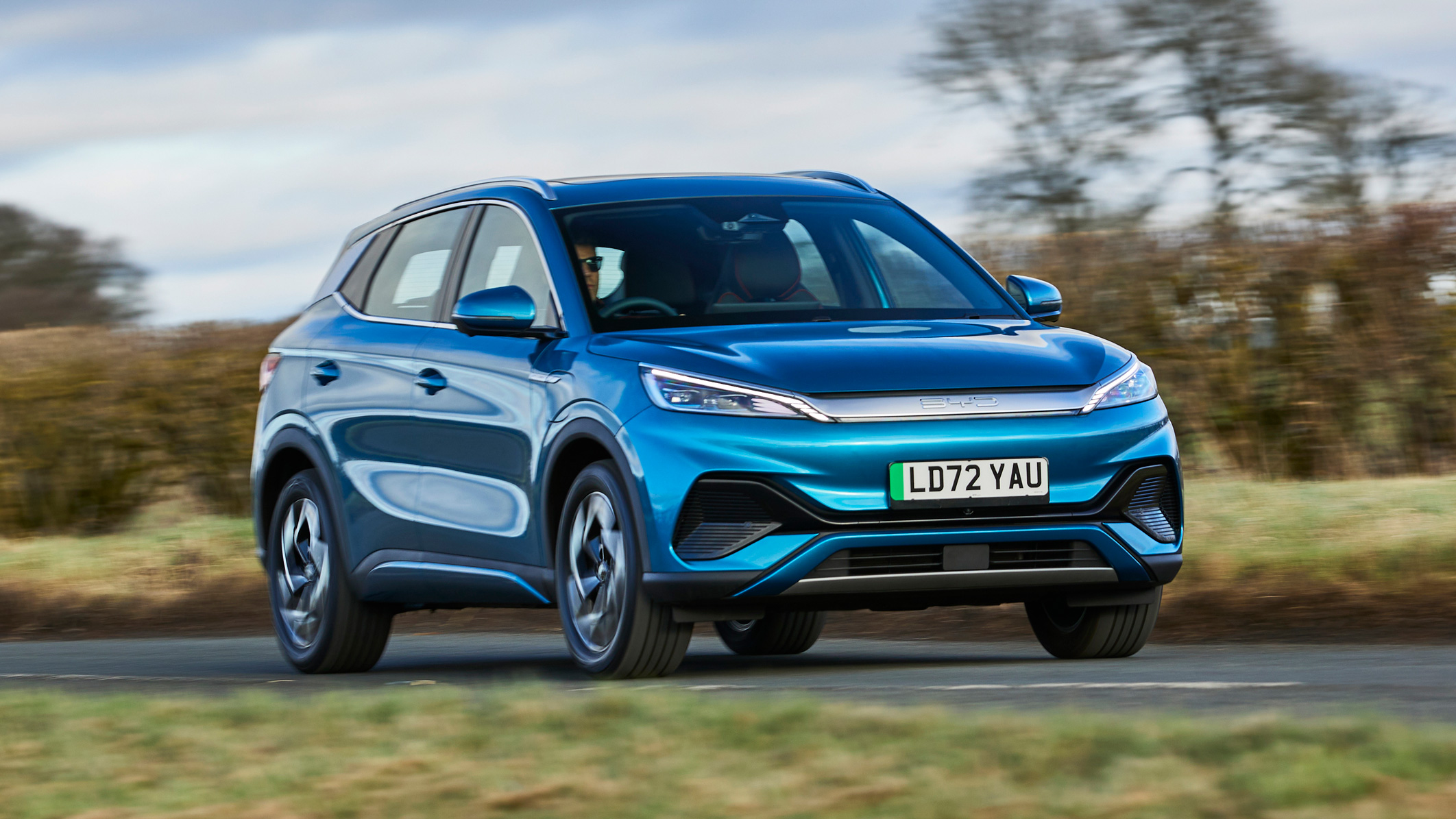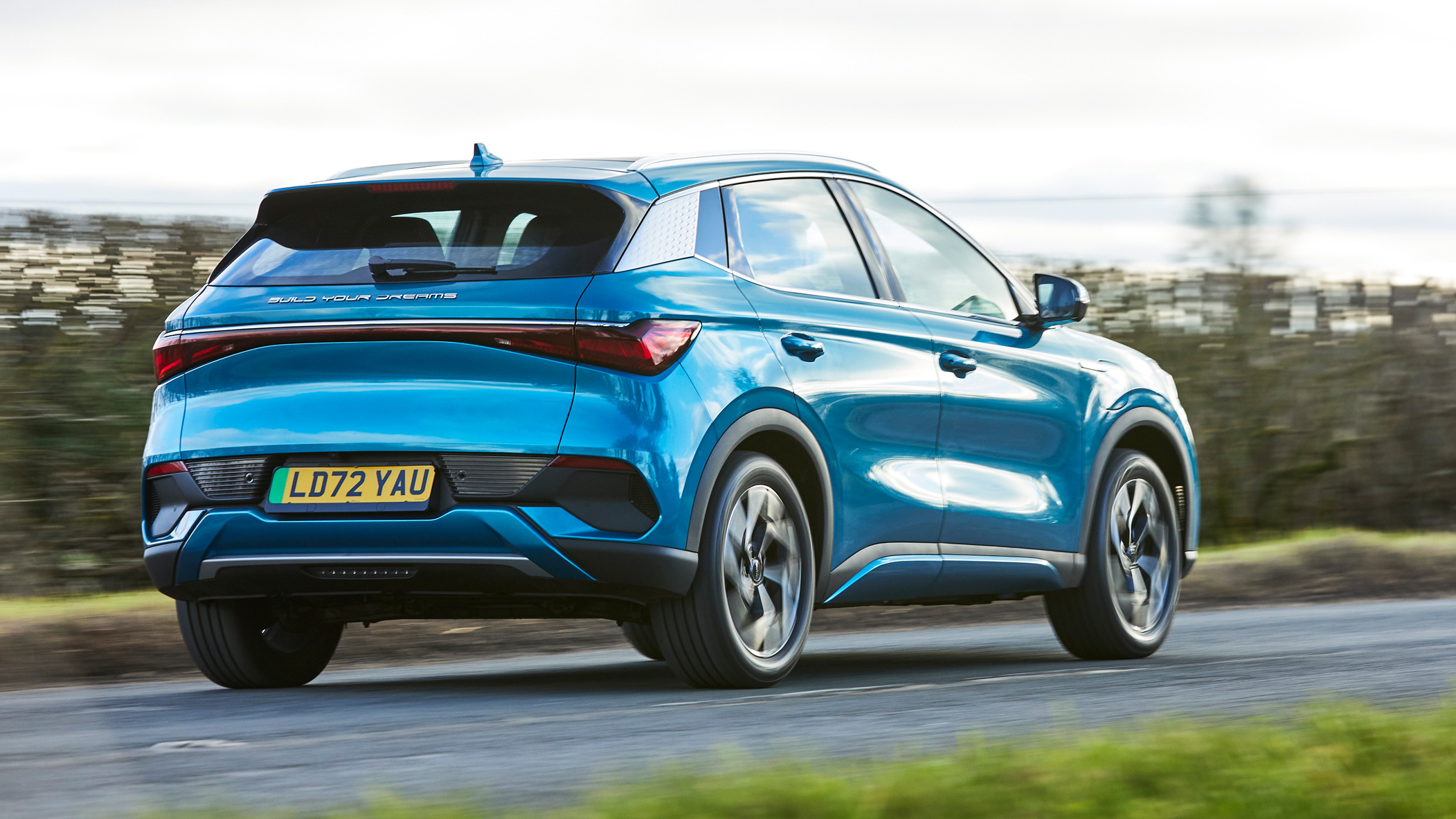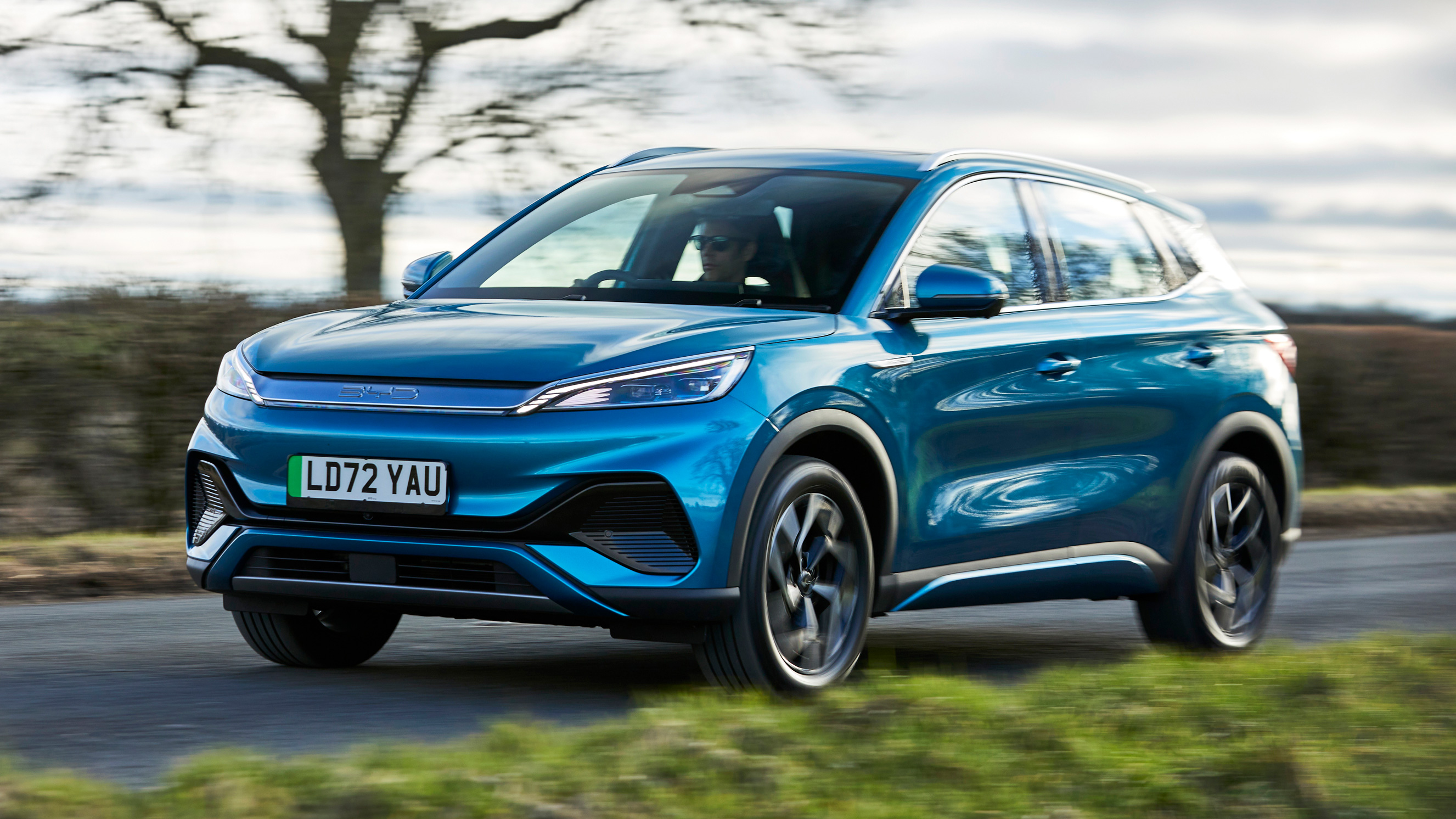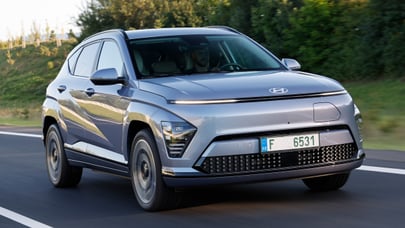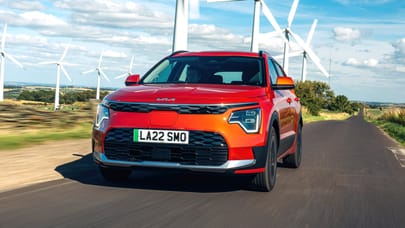
Good stuff
Spacious cabin, simple to drive, lots of kit
Bad stuff
Irritating and cheap interior, forgettable to drive, boot rather small, soggy brakes, can't even call itself cheap
Overview
What is it?
Wow, another Chinese electric car you've never heard of. And this one comes from the biggest electric-car company you've never heard of, BYD. It shifted more than 900,000 electric vehicles in 2022, mostly in China but increasingly elsewhere. The Atto 3 is a pretty straightforward small-to-medium electric crossover.
Think Kia Niro EV. A bit smaller than a VW ID.4 or Skoda Enyaq or Toyota bZ4X, bigger than a Peugeot e-2008. It's notably taller than an MG4 or VW ID.3 or Renault Megane E-Tech Electric. It's a perfectly credible rival to the second-generation Kia, which seems hard to believe until you know more about BYD, so let's just go there first.
BYD? Say what?
BYD is one of the world's biggest battery makers. It builds electric trains, buses (hundreds of them running in London, under Alexander Dennis bodies), grid storage units, cars, and batteries for all the above as well as for electronic gadgets. BYD has 600,000 employees of which a slightly staggering 50,000 are engineers.
One employee you might have heard of is BYD's design boss, Wolfgang Egger. He did the Alfa 8C Competizione and 156 during his time as head designer there, and then went to Audi and produced the Q2.
The Atto 3 is the first car on BYD's newest electric platform, which has the potential to take FWD, RWD and AWD. And 400V or 800V. And come in various sizes for low-slung cars or SUVs. BYD is across it all: the battery, motor, electronics, chips and software are all homebrewed. And very advanced.
The Atto 3 seems relatively unambitious as a first step: FWD, 400V, a 60kWh battery. But that's the kind of car selling like crazy in Europe, and so the Atto 3 is targeted to build up a relatively big presence in a short time.
What about the looks?
The exterior is neatly executed but no-one's going to be swooning. It talks familiar languages. The full-width front and rear lighting, blanked-out grille and metallic rear side panels say 'EV'. The tall proportions, roof rails, and lower cladding speak 'crossover'.
Inside though, things get a lot bolder. It's brightly coloured and the shapes are swoopy. Details lie somewhere between playful and cheesy. Your kids will love it, and if that stops them getting sick or complaining they're not there yet, it's worth it. The cabin is also decently roomy for the size of car. For more on all that, click the Interior tab of this review.
And to drive?
Acceleration is smooth, steering well-calibrated, ride generally supple. It avoids the gallumphingly heavy feel of an ID.4. The Atto 3 is an easy car to get along with, if a trickier one to engage with. So far, so family EV crossover.
It isn't perfect. The brakes are soggy. The ride pogoes a bit as it wants for damping. The HMI has a few annoying aspects, including what must be the world's smallest speedo. But overall it's solidly competitive. More details in the Driving tab.
Yeah the battery isn't that big nor the range, 260 miles, on-paper impressive. But a standard heat pump means it should perform robustly all year round.
Do you think Brits will take it to heart?
Well, over time our country has been welcoming to new foreign brands. Toyota, Datsun, Lada, Hyundai and Kia became common here before they did elsewhere in Europe. MG is selling like crazy here, and everyone knows that's Chinese.
Most of those brands arrived as a bit of a laughing stock, their first cars backward and crude, but cheap. They got better as sales grew. But BYD's cars have already done their getting better. The Atto 3 is priced to match with the established opposition, better equipped, and for the most part feels like it's earned that price.
What's in a name?
Atto is an SI prefix, like kilo, mega, milli and micro. It means 18 zeros after the decimal point. They want you to think of an attosecond: a timeframe so rapid it can't be measured. Oh.
And BYD stands for Build Your Dreams. It even spells this out below the Atto 3's rear window. Now to English ears Build Your Dreams sounds like a slogan printed in a dreamy font on a tea-towel. Not in half-inch chrome letters all across the tail of a car.
You mention high-tech…
BYD's latest cars, including the Atto3, use a cell-to-pack battery, which the rest of the car business has been talking about for years but not yet doing. Standard electric-car batteries bind their cells into modules, and their modules into the pack. Cell-to-pack puts the cells directly into the main case rather than into intermediate modules. BYD is calling it a 'blade battery'. It means 50 per cent more of the overall pack size consists of the meaningful bit, the cells that drive you along.
This means the Atto 3 can get away with a less energy-dense chemistry. Its cells have electrodes of lithium, iron and phosphate (LFP). Most rivals need more energy-dense lithium manganese cobalt (LMC) electrodes. LFP are cheaper, more durable, and less fragile in high-temperature rapid charging. And they don't use cobalt, an element that has been too often got from war zones.
There's another significant first here. The Atto 3's motor, power electronics, charger, AC-DC inverter, DC-DC converter, and battery management system are all packaged into one unit. This saves weight and wiring, and improves efficiency.
What's the verdict?
Broadly, we're impressed. The outside is boring, but kids will love the cabin. The screen systems, glass roof, 360-degree cameras, and rotating screen will wow the neighbours.
The battery capacity and max range (just 260 miles) throw up questions, but actually for most people this is a sweet spot as it reduces cost and weight versus a longer-range pack. What family drives for more than three hours non-stop? And at that point they'll be able to top up because rapid-charge infrastructure in Britain is improving by the day. A battery bigger than that would be a waste of money and weight for them. More of a pinch-point for family holidays is the smallish boot.
It drives decently under most circumstances, and, depressing though it is to say, in this class 'decent' is as good as it gets.
The Rivals
Trending this week
- Car Review
BMW 1 Series
- Top Gear's Top 9
Nine dreadful bits of 'homeware' made by carmakers




